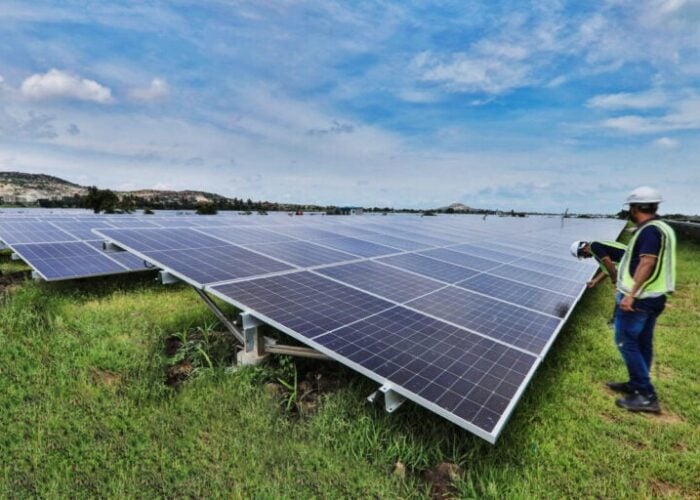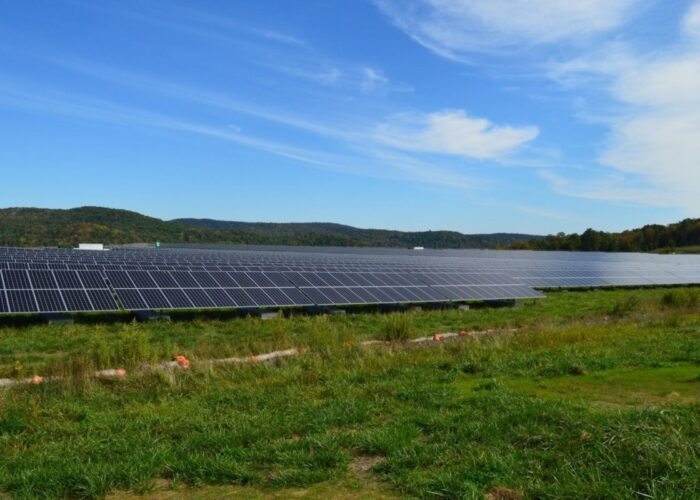Net energy metering might have America's utility companies quaking in their rubber-soled boots. Distributed solar generation, they say, is the biggest threat to their business since Thomas Edison cranked up Pearl Street Station's coal fires. But previously, so-called seismic change has shaken the electric power industry, without bringing it tumbling to the ground.
We need only look back to 1978 for clues about how well utility companies can adapt to change. Jimmy Carter's short but significant tenure as president has been written about in this blog previously. But perhaps one of his greatest achievements for the solar industry was his signature on the Public Utility Regulatory Policy Act (PURPA) 1978.
Try Premium for just $1
- Full premium access for the first month at only $1
- Converts to an annual rate after 30 days unless cancelled
- Cancel anytime during the trial period
Premium Benefits
- Expert industry analysis and interviews
- Digital access to PV Tech Power journal
- Exclusive event discounts
Or get the full Premium subscription right away
Or continue reading this article for free
PURPA forced utilities to buy power from independent power producers that could generate power more efficiently than the utility. Imagine a US electric power industry without a wholesale market and the likes of NRG Energy or Calpine.
Most people agree that PURPA was the legislative hammer that at least partially cracked the nut of utility monopoly, paving the way for renewable growth. Back in 1978, lawmakers in Washington were concerned about the price of oil, which, almost unbelievably, was being burned to produce electric power in great quantities because natural gas was too valuable to burn.
PURPA's downside for renewables is that it resulted in a large build-out of natural gas-fired cogeneration plants. Things have moved on for sure. But even today, PURPA is the only federal legislation that encourages renewables.
However anachronistic in some ways, a little law is better than no law and PURPA's “avoided cost” principle designed to reduce costs to ratepayers has untapped potential, according to a new report from the Interstate Renewable Energy Council (IREC).
Unlocking DG value – a PURPA-based approach to promoting DG growth claims that PURPA could help state-level policymakers to use this “avoided cost” approach when valuing solar assets, ie the closer to load, the greater the value.
IREC says that “unquantified” benefits include: line-loss avoidance; smaller capacity additions that follow incremental load changes; the deferral or avoidance of utility capital expenditures; environmental benefits of displacing fossil-based resources.
Some 93% of the grid connected solar installations in the US were net metered in 2011, accounting for more than 3,000MW of new generating capacity. But NEM has its limitations, says IREC.
“Although net metering policies have proven very successful at facilitating PV growth, they primarily limit generators to serving onsite load and therefore do not facilitate growth in the full range of locations where DG may provide benefits to all utility consumers,” says the report. NEM systems tend also to be limited in size.
Kevin Fox, the report's author told PV Tech: “Although NEM exists in 43 states plus DC and Puerto Rico, all of those programmes are designed to facilitate on-site use of energy. But that leaves a lot off the table, in particular development of systems that may be located in high value areas near customer load but are not necessarily serving on site load.
“There are a lot of high value locations there where you can move generation closer to customers – there is just no policy for it right now because NEM is really limited to allowing people to serve their on-site needs.”
Community renewable programmes, which have taken hold already in Colorado or gathering momentum in California, have the potential to be boosted by PURPA.
“The on-site market is surprisingly small when you take into account shading, lack of roof structure, bad roof orientation and the fact that a lot of housing stock is occupied by renters who often don't have an incentive to make it a long-term investment in on-site solar.
“IREC's approach here is to try to identify opportunities for those customers that can't host an on-site system to still participate in a local solar programme – community solar or a community renewable programmes are one way to get at that and wholesale tools are another way.
“PURPA could be used to structure both community renewables programmes and wholesale systems that don't serve onsite load.
California's community solar bills and the state's investor-owned utilities' answer to shared off-site solar is challenged by a piecemeal approach to valuing solar assets, says Fox.
“One of the sticking points is trying to figure out a valuation mechanism to value the solar output. How do you put a number on it? How do you put a price on what it's worth? This paper proposes an approach for a valuation method that could be incorporated into any of those community solar programmes.
“IREC is trying offer an approach that we hope can form the basis for some consensus around how to value solar output and how you value locations.”
Arcane though PURPA may seem, the Investment Tax Credit's commercial investor requirements until the American Recovery and Reinvestment Act 2008 demonstrates how tiny policy quirks can have significant and long-lasting impacts.
“PURPA offers the opportunity to balance the interests of stakeholders so that ratepayers are only having to pay for the value they receive,” says Fox. “Moving generation closer to load has value to the system and all ratepayers, but we don't have a policy mechanism that encourages development in those areas. We think PURPA could be that policy mechanism.”






